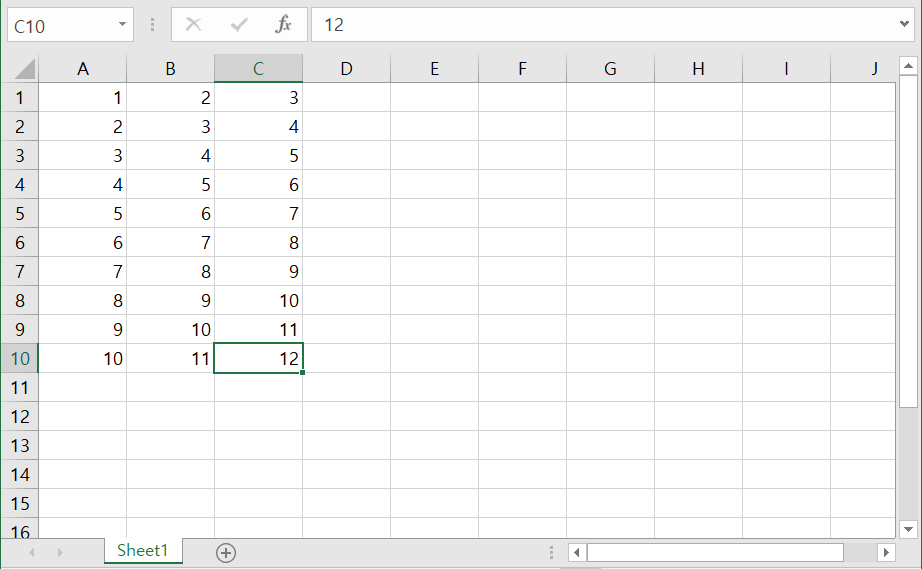Contents
- xlrd/xlwt - 파이썬으로 엑셀 다루기
- xlrd/xlwt 설치하기
- xlrd 기본 사용
- xlwt 기본 사용
- xlrd/xlwt 조건식 사용하기
- xlrd/xlwt 여러 시트 다루기
- xlrd/xlwt 여러 파일 다루기
- xlrd/xlwt 통계 데이터 추출하기
- xlrd/xlwt 스타일 지정하기
- xlrd/xlwt 셀 병합하기
- xlrd/xlwt 열 너비 조절하기
Tutorials
- Python Tutorial
- NumPy Tutorial
- Matplotlib Tutorial
- PyQt5 Tutorial
- BeautifulSoup Tutorial
- xlrd/xlwt Tutorial
- Pillow Tutorial
- Googletrans Tutorial
- PyWin32 Tutorial
- PyAutoGUI Tutorial
- Pyperclip Tutorial
- TensorFlow Tutorial
- Tips and Examples
xlrd 기본 사용¶

xlrd를 이용해서 엑셀 데이터를 읽어오는 방법에 대해 알아봅니다.
위 그림과 같이 데이터가 있는 엑셀 파일을 준비합니다.
예제1 - 시트의 개수¶
import xlrd
wb = xlrd.open_workbook('xlrd_xlwt_ex00.xls')
nsheets = wb.nsheets
print('Number of sheets:', nsheets)
Number of sheets: 1
xlrd.open_workbook()은 엑셀 파일(workbook)을 열어줍니다.
nsheets는 엑셀 파일 안의 시트의 개수입니다. 출력해보면 한 개의 시트가 있음을 알 수 있습니다.
예제2 - 행과 열의 개수¶
import xlrd
wb = xlrd.open_workbook('xlrd_xlwt_ex00.xls')
sheets = wb.sheets()
nrows, ncols = sheets[0].nrows, sheets[0].ncols
print('Number of rows:', nrows)
print('Number of columns:', ncols)
Number of rows: 10
Number of columns: 3
wb(workbook)의 sheets()는 전체 시트에 대한 정보를 리스트의 형태로 반환합니다.
첫번째 시트(sheets[0])의 nrows, ncols는 각각 행의 개수와 열의 개수입니다.
10개의 행과 3개의 열이 있음을 알 수 있습니다.
예제3 - 행과 열, 셀의 값¶
import xlrd
wb = xlrd.open_workbook('xlrd_xlwt_ex00.xls')
sheets = wb.sheets()
first_row = sheets[0].row_values(0)
third_column = sheets[0].col_values(2)
cell_value_3_3 = sheets[0].cell_value(2, 2)
print(first_row)
print(third_column)
print(cell_value_3_3)
[1.0, 2.0, 3.0]
[3.0, 4.0, 5.0, 6.0, 7.0, 8.0, 9.0, 10.0, 11.0, 12.0]
5.0
row_values()는 시트의 특정 행의 값들을 리스트의 형태로 가져옵니다.
마찬가지로 col_values()는 시트의 특정 열의 값들을 가져옵니다.
cell_value()는 셀의 값을 가져옵니다. 행과 열의 인덱스를 순서대로 입력해줍니다.
이전글/다음글
이전글 : xlrd/xlwt 설치하기
다음글 : xlwt 기본 사용